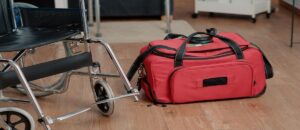The excitement of a new school year often coincides with stress around head lice. While lice are more a nuisance than a medical problem, school nurses are nonetheless inundated with phone calls, emails, and health office visits from parents, teachers, and students alike, confused and distressed about these tiny, harmless, but hugely bothersome, insects. Disseminating information at the start of the school year that outlines the school’s lice policy, dispels common myths, and provides helpful resources and guidance for the school community can alleviate some of the lice hysteria, prevent unnecessary student absences, and keep school nurses focused on legitimate health concerns.
Lice Policy
The CDC, NASN, and AAP all discourage once widely standard “no nit” policies. Additionally, mass screenings for lice or nits in the school setting are not an effective transmission prevention measure and are not recommended. School nurses should advocate for not excluding students due to the presence of lice or nits, encouraging parents to regularly perform lice checks on their children, and for limited school screenings when either symptoms are present or there is extraordinarily high suspicion due to direct contact. If an active infestation has been identified at school, parents or guardians should be promptly notified and given instructions on treatment (see more info below). In general, a notification sent to the broader community, whether it be the classroom, grade level, or school, is generally unnecessary since head lice are not a public health hazard and such communications can put student confidentiality at risk and have been shown to increase social stigmas and community anxiety.
Lice Education
Debunking common falsehoods can help significantly reduce some of the lice hysteria and calm the unease that typically accompanies cases of lice in school. It is important for families and staff to know that lice do not spread easily and that school, in fact, is not known to be an area of high lice transmission. Home screening (by parents or guardians) for lice can be an extremely effective tool to detect and control active infestation, as well as prevent transmission. Parents and guardians should be encouraged to check their children’s heads weekly through detection combing, paying special attention to the base of the neck and behind the ears. If lice or nits are found, wet combing is the safest and most effective treatment, as there are currently no chemical products that kill both lice and nits. When done correctly with the right comb (the WelComb!), wet combing removes infestations without any risk of toxicity or leaving any nits behind. Stock a supply for your school to provide to families or direct them to Amazon or their local Dollar General.
Lice Resources
Whether it’s sample letters to send home when a lice infestation is identified at school, handouts to distribute that describe the dos and don’ts of lice management, or just a helpful place to direct families struggling with the nuisance of nits, Welcomb is the only source you’ll need.
School nurses have enough on their plates. Let Welcomb tackle the lice problem by helping to answer all those panicked questions, addressing the multitude of concerns, and best of all, providing a safe and effective treatment for the removal of lice and nits.





